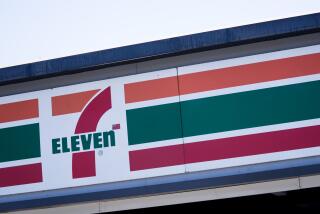‘Secondarily, we wanted to move out of Coronado. It was getting too populated.’
- Share via
Allen Campbell, 81, is a walking textbook of Coronado and Chula Vista history. He has picked up his knowledge of South Bay through a sort of osmosis: Campbell moved from Colorado to the area with his family in 1910, and never left. He built his Chula Vista home during a summer break from his teaching job at Sweetwater High School. After many years as an American government and “shop” teacher, Campbell was Sweetwater’s principal from 1950 to 1968, and helped the school garner 15 Freedoms Foundation awards. Times staff writer Caroline Lemke interviewed Campbell at his home and Barbara Martin photographed him.
We moved to Coronado in 1910. We lived there in those days when it was not overpopulated. There were only about 2,000 people or less. And you could walk on a diagonal to about any point in town. We lived down in the “flats,” what they now call the Glorietta District. From our house to what was then Tent City, there were about four houses, and the rest of it was grass. Coronado was populated with more jack rabbits than people at that time. There was lots of jack-rabbit hunting.
Tent City was a resort of tents and had a bandstand. The Spreckels Co. would import bands and so forth to play for the summer, and there was a business office and stores and a big dance hall, which was demolished in 1945. This was the chief resort up until 1926, when Klaus Spreckels, the son of John D., started Mission Beach.
My wife and I moved over here (to Chula Vista) in 1949 to live closer to my work and really to get away from Coronado. My work was over in National City, and we bought this property in the ‘40s and built the house in ’49.
Secondarily, we wanted to move out of Coronado. It was getting too populated. You’d meet people, get acquainted with them, and they’d move away. It was a transient population, military. And when we moved over here, we became associated with permanent residents, people we still visit and have friendships with. Lasting friendships you couldn’t have over there because of the mobility of the population. Plus, we felt we were moving out into the country a little bit.
This area was all lemon orchards. They had two packing sheds in operation in Chula Vista. In fact, Chula Vista was known as the lemon capital of the country. This lot over here was all lemons, the block down below was all lemons, this particular area had been planted in lemons before we bought the land.
I think it’s unfortunate it has become so large. If we had had slower growth, I think the assimilation of the population would have been much more complete. When I say assimilation of the population, I’m thinking about road availability, housing availability, development at a slower pace.
National City High School was the first high school established in the South Bay, which everybody in the South Bay attended. Sweetwater High School was built in 1921, the first graduating class came out in 1922. It took everybody in the South Bay from the Tijuana border to the San Diego border.
I started as a teacher in 1935, worked my way up, so in 1950 I took over the principalship. We had a very stable school community.
The frustrations of being a principal are you never achieve all that you set out to achieve. You always have your sights a little higher. But the pleasures come from your personal relationship with the student body members, your relations with your compatible faculty, the opportunities of social interrelationships of students and faculty . . . we enjoyed many accomplishments. The acceptance of the school’s program by the community and the willingness of the parents to come to the school and communicate with us--these were all pluses.
More to Read
Sign up for Essential California
The most important California stories and recommendations in your inbox every morning.
You may occasionally receive promotional content from the Los Angeles Times.













